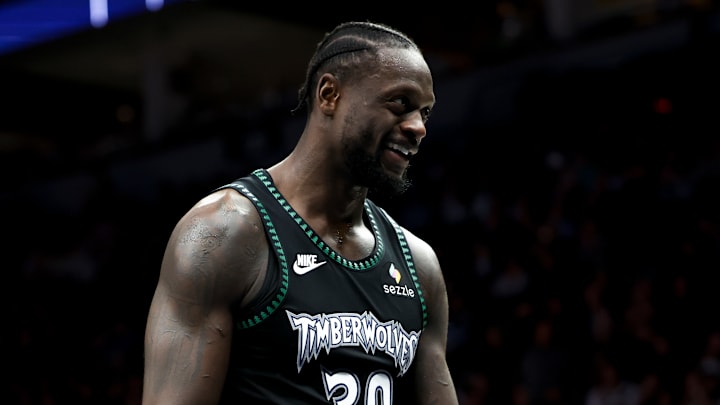When the New York Knicks traded Julius Randle to the Minnesota Timberwolves in 2024, the returning and outgoing packages spoke volumes. Minnesota received Keita Bates-Diop, Donte DiVincenzo, Julius Randle, and a first-round pick, while the Knicks took back Karl-Anthony Towns and James Nnaji's draft rights.
What Randle has thoroughly proven during his time in Minnesota, however, is that he's exactly what neither Knicks fans nor the front office thought he could be: The perfect second option.
Randle arrived in Minnesota as a decorated player whose reputation failed to align with his accolades. He was a two-time All-NBA honoree and three-time All-Star who'd won the 2021 Most Improved Player award and led the Knicks to their first playoff appearance in eight years.
With that list of accomplishments on his résumé, one would've thought that fans could've at least given him the credit of being a great player in a poor structural fit.
Instead, many downplayed Randle entirely. They questioned if he deserved his accolades and highlighted his weaknesses while rarely breathing a word about his strengths. As such, the Timberwolves were all but unanimously viewed as the losers of the trade.
Fast forward a year and Randle has consistently proven that he's one of the best No. 2 players in the Association and a perfect complement to Anthony Edwards and Rudy Gobert.
Julius Randle has proven he's the perfect No. 2 option with Timberwolves
While Randle may not have been an ideal fit with Jalen Brunson, he's helped Edwards in immeasurable ways. He's also made the most of a frontcourt pairing with Gobert that many expected to falter due to a lack of ideal spacing.
The key to Randle's success has been his extraordinary ability to adapt to almost any situation he's placed in as the second option.
Between 2023-24 and 2024-25, Randle increased his three-point field goal percentage by 3.3 percent and decreased his field goal attempts by 4.6. He missed the entire month of February due to injury, but that ultimately set the stage for a powerful statement.
Minnesota entered the night of his return on Mar. 1 at 33-29 and went 16-4 the rest of the way, with Randle playing a definitive role in their success.
The Timberwolves desperately needed to resolve the lack of cohesion on offense. Randle stepped up by averaging a team-high 5.2 assists per game from Mar. 1 on, all the while scoring 18.2 points per contest on .523/.398/.791 shooting.
Once the playoffs rolled around, he forced LeBron James to shoot 10-of-25, Jimmy Butler to go 1-of-13, and held both Shai Gilgeous-Alexander and Jalen Williams below 45 percent shooting.
Julius Randle is taking his game to another level in 2025-26
It's still early, but Randle has parlayed past success into a brilliant start to the 2025-26 season. Edwards has appeared in just six of the Timberwolves' 10 games, but his fellow All-Star has more than picked up the slack.
Through 10 outings, Randle is averaging 25.2 points, 7.1 rebounds, 6.1 assists, 1.1 steals, and 2.1 three-point field goals made on .549/.412/.869.
If his current averages hold, it would be the second time since 2022-23 that Randle has eclipsed 25.0 points per game. It would also be the fourth time since 2020-21 that he averaged at least 24.0 points per contest, which speaks to the sustainability of his success.
Randle also has two triple-doubles and four 30-point games over his past eight appearances, thus rounding an early case for a fourth All-Star Game appearance into form.
With the ability to adapt to whatever the situation calls for, Randle has epitomized what a second option must be. Their role can change from night to night, but the best in such a volatile position are able to face those challenges in stride.
Randle may not have received credit from those who questioned his limitations, but he's perfectly suited for the role he's been given in Minnesota.
